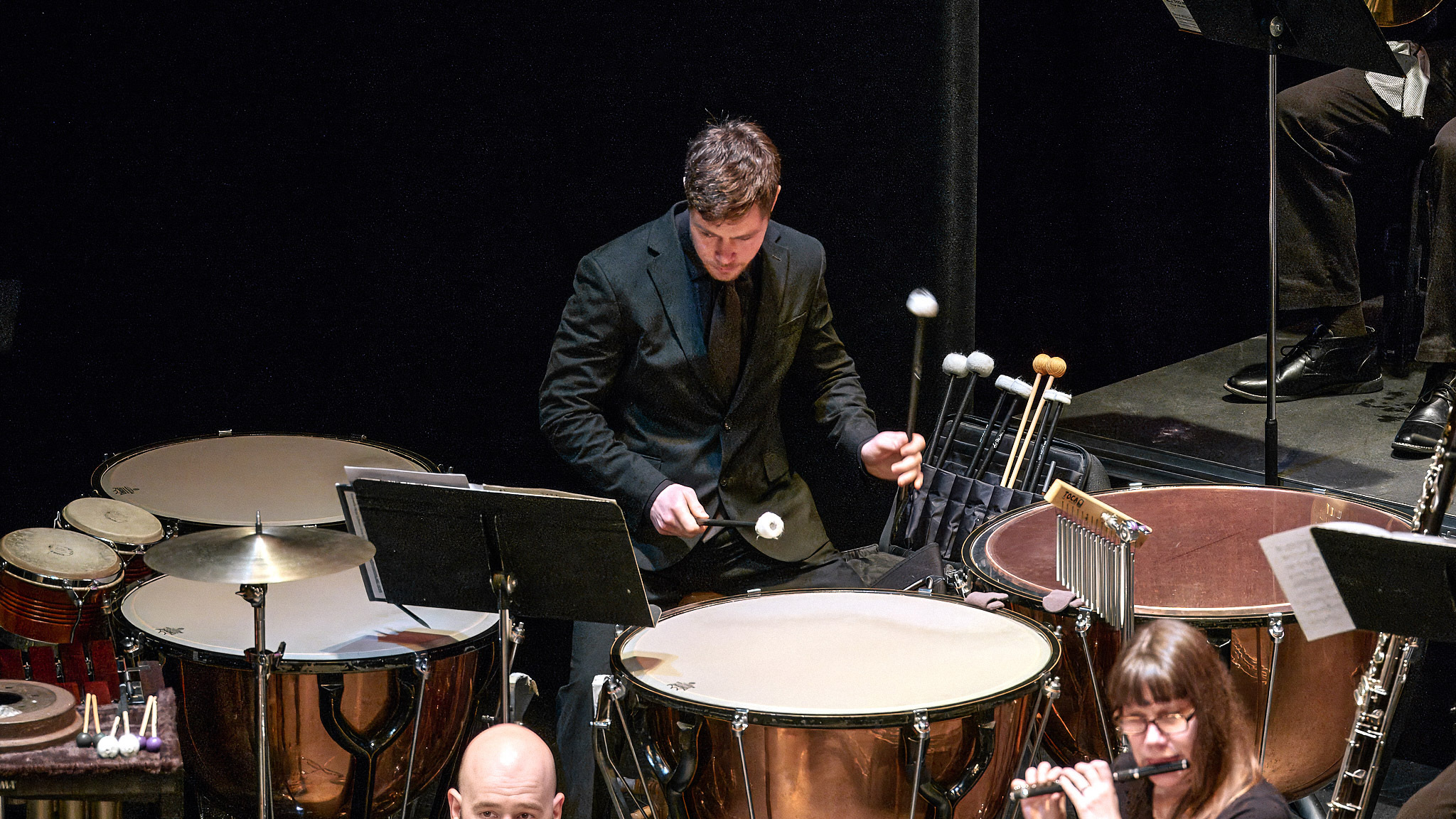The Mighty Timpani


The timpani, or kettledrums, hold a unique place in orchestral history as the first percussion instruments to become a permanent fixture in the ensemble. Before their introduction, orchestras relied primarily on strings and winds for both melody and rhythm. Over time, timpani evolved from their military and ceremonial origins into one of the most powerful and expressive elements of the orchestra. Today, they provide everything from rhythmic drive to harmonic support, making them an indispensable part of symphonic music.
At The French Connection on April 5, you can experience French composer Hector Berlioz’s Symphonie fantastique (1830), a pioneer in timpani orchestration experimentation. For the first time in symphonic history, Berlioz was the first composer to demand multiple (four!) musicians play timpani to create thunderous soundscapes. Keep your eye out for this moment in the third movement of Symphonie fantastique.
Here at the Yakima Symphony Orchestra, we are proud to have Mitchell Vogel as our Principal Timpanist. Mitch is a percussionist and timpanist based in Eugene, Oregon, and a DMA student at the University of Oregon. He previously studied at the Manhattan School of Music and has performed with many professional ensembles throughout the Pacific Northwest. In addition to his role with YSO, he serves as Principal Percussionist with the Portland Columbia Symphony and Principal Timpanist for the Eugene Concert Choir. His impressive background and training, under esteemed teachers such as Ian Kerr, Pius Cheung, and Chris Lamb, bring a level of artistry and precision to every performance.
Before timpani joined the ensemble, early orchestras of the Renaissance and Baroque periods (16th–17th centuries) featured a more limited instrumentation, primarily centered around:
Percussion was largely absent, except in military-style or theatrical performances where small drums or tambourines might make an appearance.
Timpani entered the orchestra in the late 17th century, originally used in pairs to reinforce trumpet fanfares in festive or military-style music. French composer Jean-Baptiste Lully was among the first to incorporate them into operatic and orchestral works, followed by George Frideric Handel and Johann Sebastian Bach, who used them to enhance grandeur in sacred and ceremonial music.
By the Classical period (18th century), timpani had become a permanent orchestral member. Joseph Haydn and Wolfgang Amadeus Mozart expanded their use, treating them as more than just background reinforcement. In Beethoven’s symphonies, timpani took on a dramatic role, adding intensity and rhythmic momentum—most famously in his Symphony No. 9, where thunderous timpani strokes drive the music forward.
The 19th century saw composers experiment with timpani in increasingly bold ways, and no work exemplifies this more than Hector Berlioz’s Symphonie fantastique (1830). Berlioz, a master of orchestration, pushed the boundaries of the instrument’s capabilities, using multiple timpanists to create dramatic, atmospheric effects throughout the symphony.
In the third movement, Scène aux champs (Scene in the Country), the timpani become a force of nature. Four musicians play on two timpani sets to represent a building storm. As the English horn and oboe sing shepherds’ calls to one another other, the timpani storm grows and eventually overtakes the shepherds’ conversation, forcing them to find shelter.
In the fourth movement, Marche au supplice (March to the Scaffold), the timpani establish a menacing undercurrent, mimicking the distant rumbling of an approaching storm or the heartbeat of the condemned protagonist as he marches toward his execution. The relentless, thunderous strokes add to the tension, making the timpani an integral part of the storytelling.
The final movement, Songe d'une nuit du sabbat (Dream of a Witches’ Sabbath), takes timpani usage even further. Here, Berlioz employs multiple sets of timpani to create eerie, rumbling textures, representing supernatural forces at play. He also experiments with unconventional dampening techniques (where percussionists stop the sound from ringing), allowing for sharper, more ominous articulations that heighten the grotesque and chaotic nature of the scene.
Berlioz’s innovative approach to timpani in Symphonie Fantastique paved the way for future composers to see the instrument as more than just a rhythmic tool—it became a source of color, drama, and psychological intensity within the orchestra.
The timpani section is distinct from other percussion instruments in the orchestra. While other percussionists often play a variety of instruments within a program, a timpanist specializes in these large, tunable drums, using pedal mechanisms to adjust pitch instantly. The ability to seamlessly blend rhythmic drive with harmonic support requires a deep understanding of orchestration, musical sensitivity, and technical precision.
The next time you hear the Yakima Symphony Orchestra, take a moment to listen for the timpani. Whether delivering a thunderous heartbeat or a subtle harmonic undercurrent, these mighty drums are essential to the orchestral sound, brought to life by the expertise of YSO’s Principal Timpanist Mitchell Vogel.
—Vanessa Moss